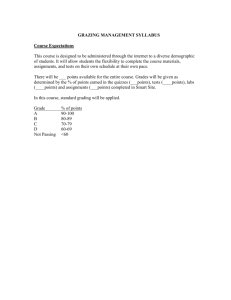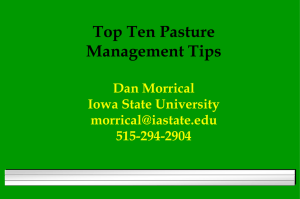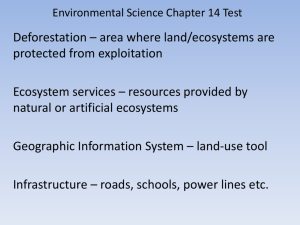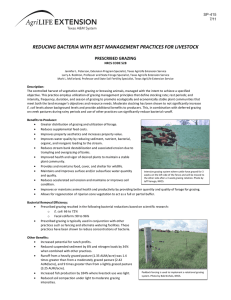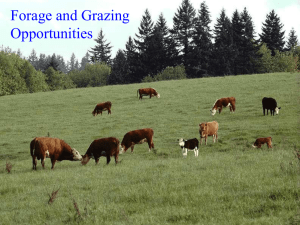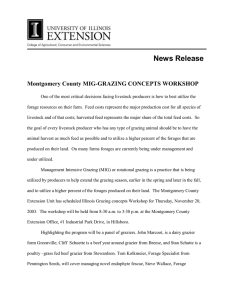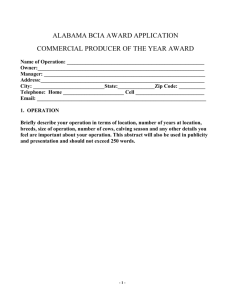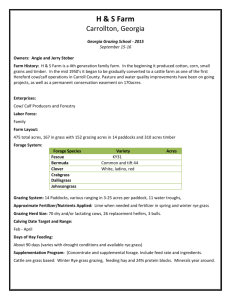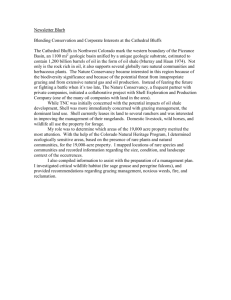How long should I wait to graze newly planted forages?
advertisement
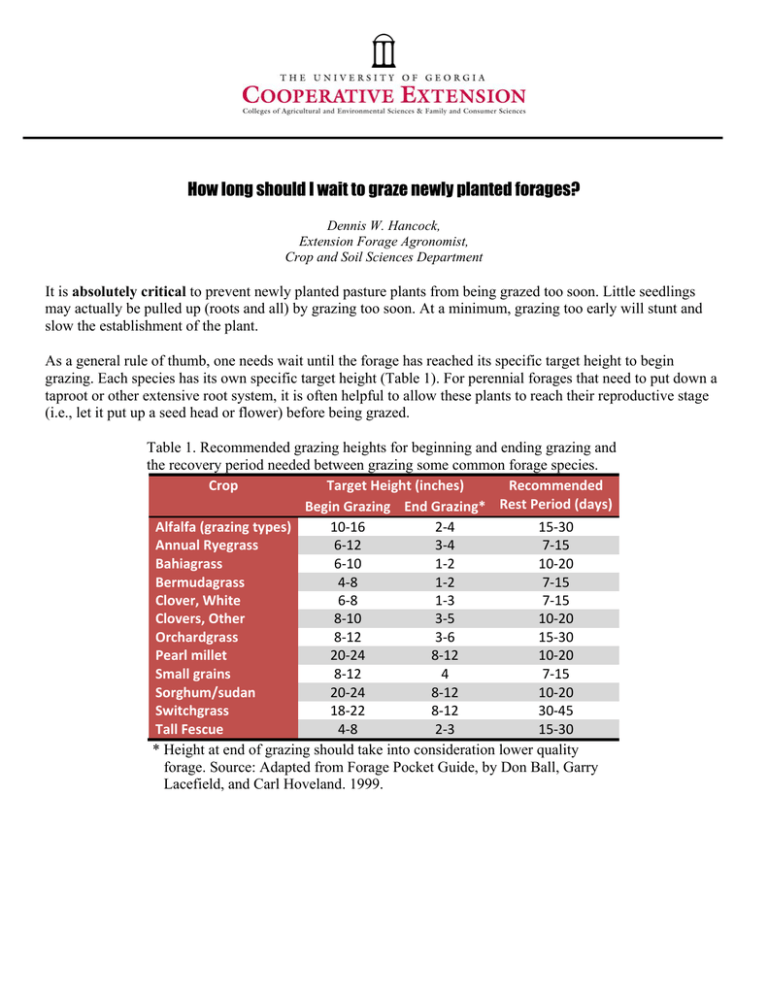
How long should I wait to graze newly planted forages? Dennis W. Hancock, Extension Forage Agronomist, Crop and Soil Sciences Department It is absolutely critical to prevent newly planted pasture plants from being grazed too soon. Little seedlings may actually be pulled up (roots and all) by grazing too soon. At a minimum, grazing too early will stunt and slow the establishment of the plant. As a general rule of thumb, one needs wait until the forage has reached its specific target height to begin grazing. Each species has its own specific target height (Table 1). For perennial forages that need to put down a taproot or other extensive root system, it is often helpful to allow these plants to reach their reproductive stage (i.e., let it put up a seed head or flower) before being grazed. Table 1. Recommended grazing heights for beginning and ending grazing and the recovery period needed between grazing some common forage species. Crop Target Height (inches) Recommended Begin Grazing End Grazing* Rest Period (days) Alfalfa (grazing types) 10‐16 2‐4 15‐30 Annual Ryegrass 6‐12 3‐4 7‐15 Bahiagrass 6‐10 1‐2 10‐20 Bermudagrass 4‐8 1‐2 7‐15 Clover, White 6‐8 1‐3 7‐15 Clovers, Other 8‐10 3‐5 10‐20 Orchardgrass 8‐12 3‐6 15‐30 Pearl millet 20‐24 8‐12 10‐20 Small grains 8‐12 4 7‐15 Sorghum/sudan 20‐24 8‐12 10‐20 Switchgrass 18‐22 8‐12 30‐45 Tall Fescue 4‐8 2‐3 15‐30 * Height at end of grazing should take into consideration lower quality forage. Source: Adapted from Forage Pocket Guide, by Don Ball, Garry Lacefield, and Carl Hoveland. 1999. The University of Georgia and Ft. Valley State University, the U.S. Department of Agriculture and counties of the state cooperating. Cooperative Extension, the University of Georgia College of Agricultural and Environmental Sciences, offers educational programs, assistance and materials to all people without regard to race, color, national origin, age, gender or disability. CSS-F034 An Equal Opportunity Employer/Affirmative Action Organization Committed to a Diverse Work Force January 2009 Issued in furtherance of Cooperative Extension work, Acts of May 8 and June 30, 1914, The University of Georgia College of Agricultural and Environmental Sciences and the U.S. Department of Agriculture cooperating. J. Scott Angle, Dean and Director.

